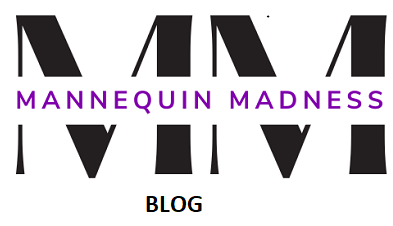So, you’ve taken the plunge and opened a boutique of your very own. First off, congratulations! The opening of a new store and business venture can be an overwhelming, if not exciting mad dash to get anything and everything done by your opening date.
You’ll be wearing many different hats while getting your boutique off the ground, from sourcing apparel and accessories to hiring staff. However, it’s vital that you pay close attention to visual merchandising. Using some trusted methods for strategically planning your retail space, you’ll be able to brand your boutique, engage with customers, and maximize profits. To start, here are some tips:
Know Your Space
Whether this is your first store or if you’re a retail veteran, it pays to do your research and know just how your sales floor will look ahead of time. Don’t leave visual plans until the last minute. Sketch out your ideas well in advance and coordinate them with staff or potential customers for input.
Afterwards, coordinate your space with your fixtures in mind. If you have a storefront with high ceilings, play up that volume with elegant and dramatic lighting or tall artwork and graphics.
Tell a Story
Visual merchandising should always relate to customers on a personal level. Whether you’re selling men’s, womenswear, children’s clothing, or you’re broadening your horizons with a ‘lifestyle concept’ store featuring accessories and homeware, you need a cohesive narrative that appeals to customers the second they walk in the door.
This can be anything from creating a replica living room environment featuring your latest products for the home, or a grouping of mannequins dressed in your new collections to showcase chic, wearable looks customers won’t be able to resist. Retaildoc.com discusses a trusted strategy among many merchandisers and retailers: putting the “wants” at the front of the store and the “needs” towards the back.
For example, if you’re opening a new clothing store just in time for the Fall fashion season, stage your Fall-centric visuals at the front of the store. This creates a sense of anticipation among shoppers that the next season is here.
They’ll be attracted by new pieces, while day-to-day basics, footwear, and other accessories can be placed closer to the back so that customers will have to walk past your statement pieces to get to lower-ticket items.
Organize Intuitively
Throughout your boutique, you’ll want to keep things organized the way you envision customers putting together outfits on their own. Space hanging garments on a rack according to a certain color story or with a hypothetical capsule wardrobe in mind.
Consider your rack from left to right. Start with outerwear or a statement jacket followed by a full size run of a coordinating top or shirt. Then, follow that with several sizes in trousers or a skirt with an alternative top or shirt, perhaps in a different color or a varied silhouette, and finish off by a complementary, yet occasional jacket, dress, or statement piece that shows off the versatility of each piece on the rack.
Use tables and horizontal fixtures for multitudes of basics in a variety of colors, such as jeans, knitwear, tee shirts, and other tops that fold easily. Lastly, use accessories as accent pieces that tie in your overall theme.
Consider installing shelving at eye level to highlight key bags and eyewear while punctuating your space with single or grouped mannequins styled head to toe in outfits, using pieces from your racks and tables.
Keep Things Fresh
Generally, you should change up your visuals about once a month. This will keep recurring clientele interested and engaged in your offerings and will give window shoppers and new customers a better idea of your perspective as a retailer. More importantly, this will allow you to analyze what’s selling and what needs an extra push, according to Shopify.
Throughout the year, remember to merchandise based on occasions and seasons coming up, but always make sure that your visuals are timely and relevant. For instance, you can start setting up for Fall fashion a few weeks before Labor Day and for the Holiday Season around Thanksgiving. To tie this into telling a story, you should aim to build anticipation.
Integrate Your Online and Brick & Mortar Boutique
By tying in your in-store visuals with your online presence, you’ll be able to brand your boutique cohesively across all retail fronts. Whether or not you’re actually selling your products online, having a digital storefront is a necessity for any retailer in the 21st century.
At a minimum, you should include high-resolution images of your brick & mortar store and your online fashion boutique. For more inspiration, check out our Pinterest board which has window displays ideas for every industry and for all seasons of the year.
This article was written by Gracia Smith from DressBoutique.com.
Image 1: https://pixabay.com/static/uploads/photo/2015/10/12/15/18/clothing-store-984396_960_720.jpg





